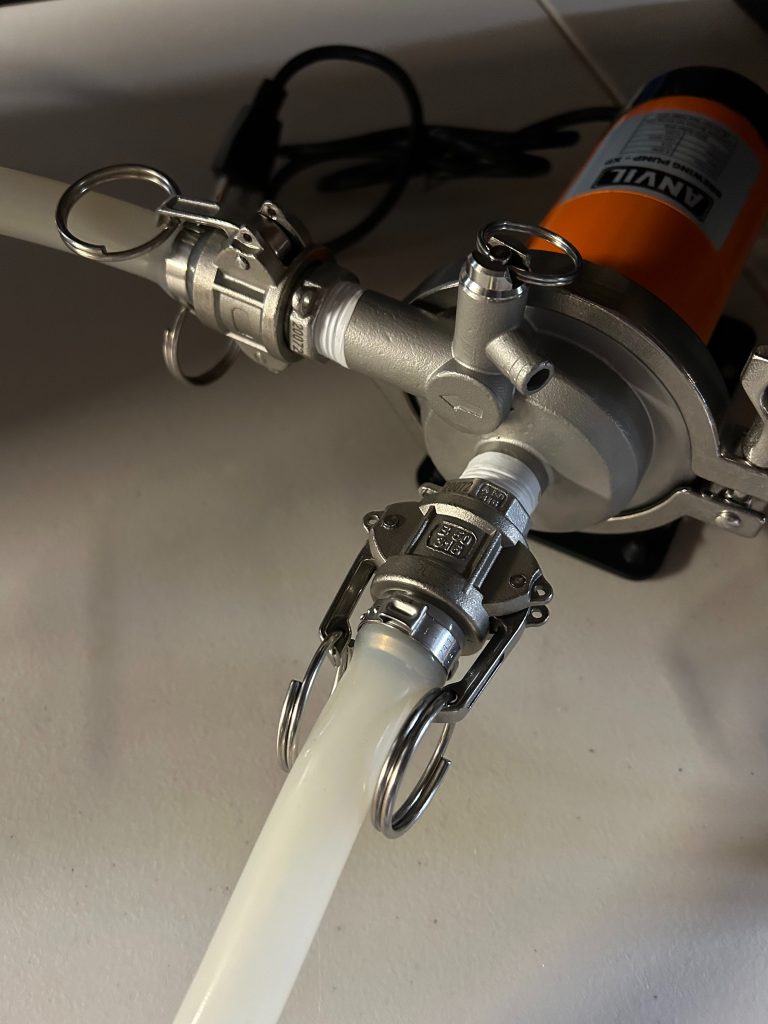A journey in brewing a nearly-authentic Finnish sahti in the Seattle area.
An Early Start
Barely an hour past sunrise, I began heating my juniper-infused brewing water to strike temperature. Then I went and made myself a thermos of hot coffee to sustain me.
I went about my usual routine, setting out all of my equipment on a table within easy reach. Except this time, I had no brewing salts or hops to measure, no grain to mill. Both the sahtimallas and the kaljamallas were already milled or ground, so all I needed to do was measure them into a bucket. I decided not to use any brewing salts, and leave the water as-is on this first attempt, with the exception of using phosphoric acid to target a mash pH of 5.4.
Perkele!
If you aren’t familiar, perkele is a Finnish word meaning “evil spirit,” “the Devil,” “god damn,” or just about the worst, most-profane swear word you can think of.
Here is a great video, which explains everything you need to know:
As I got deeper into brewing this sahti, I began to wonder if Perkele himself had been making plans against me.
Complications, or: The Hubris of Man
Of course, it wouldn’t be a proper brew day without something “going sideways.” I ended up with a trio of problems that made my entire day less relaxing than I had intended. The first was completely my fault: with my recipe, I was on the verge of overloading my kettle with too much grain. I had also added an extra 1-2 liters of strike water the night before, expecting some significant amount of boil-off during the 3-hour infusion process. So when it came time to pour in the grain and start the mash, I realized I wasn’t going to be able to fit it all.
I could’ve just brewed with less grain, and made a milder beer in return. But a stubborn part of me really wanted to target the higher ABV my recipe had intended. I could’ve also resorted to adding sugars or malt extract to make up the difference, but I was dead-set on using grain exclusively.
I decided to start with only half of the total grain. After two hours (about halfway through the mash), I would lauter the sweet wort into a bucket and discard the spent grain. Then, I would return the wort to the kettle and add the remaining grains for the second half of the mash.
This method would likely negatively impact the enzymatic activity for both grain additions. The grain in the first half wouldn’t benefit from a beta-amylase or alpha-amylase rest due to the high temperatures in the last two hours of the mash. Similarly, the second half wouldn’t get the advantages of the acid and protein rests from the first two hours of the mash.
In hindsight, I realize this approach could undermine the entire purpose of the step mash. However, I felt that if I would end up with a lower original gravity regardless of my approach, increasing the grain bill and accepting the lower efficiency from this “split mash” method might give me a higher gravity than properly step-mashing with only half the intended grain. This way, I would sacrifice some enzymatic benefits to use the full volume of grain from my recipe.
Equipment Failures
The other two issues I faced were completely out of my control. My pH meter refused to finish its calibration, so I was forced to use it in whatever state it had settled. This meant I couldn’t be absolutely sure of the mash pH and how much phosphoric acid I needed to acidify the mash properly.
I measured the pH throughout the mash anyway: if the meter wasn’t too far off, at least I could reassure myself I was in the ballpark. I measured 5.33 at 30 minutes and 5.23 at 60 minutes, already below my target of 5.4, so I decided not to add any phosphoric acid at all.
I had also just upgraded to the Anvil Brewing Pump-XP, complete with some nice camlock-style hose clamps.


But when I began recirculating the mash, the pump started making a loud buzzing noise.
Throughout the last hour or two of the mash, I sent videos and photos to the customer support team at Blichmann Engineering trying to troubleshoot the issue. Ultimately, this was something they hadn’t seen before, so they offered to send me a replacement. Of course, it was already too late for this batch.
(Side note: the replacement worked beautifully, silent without any issues!)
Pitching and Screaming
When I finally reached the end of the mash, it was absolutely bizarre to be… pretty much done.
I didn’t need to heat to a boil, because there was no boil. I just needed to chill the wort down to yeast pitching temperature.
Being unable to source Finnish baker’s yeast, I opted to split the sahti into three different fermenters, each with a different yeast strain:
- OYL-033 Jovaru Lithuanian Farmhouse
- OYL-071 Lutra Kveik
- WY3068 Weihenstephan Weizen
To simplify temperature control, I would maintain a narrow temperature range of 70-75°F for primary fermentation. This range is shared by all three strains and should produce the fruity and banana esters characteristic of this beer style. Or at least something similar.
In my readings about historical brewing, I learned of a strange custom in Norway called Gjærkauk, which translates to “yeast scream.”
In old days, brewers believed that evil spirits lingering nearby would spoil the beer. To scare them away, brewers would scream as loud as they could while pitching the yeast into the fermenter. Finnish brewers did this too!
So: three times, I screamed PERRRKELE!!! from the depths of my garage, making sure to roll the R as much as was appropriate.
It had been a very long day.

Leave a Reply